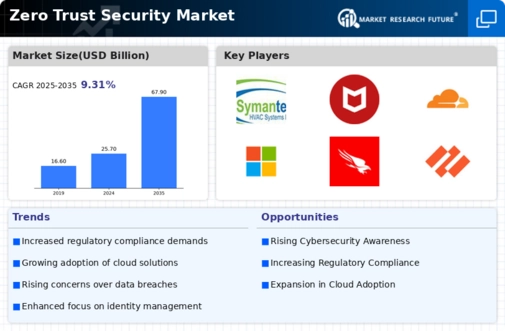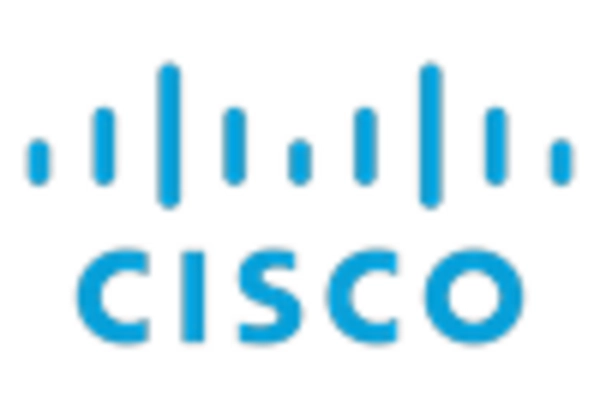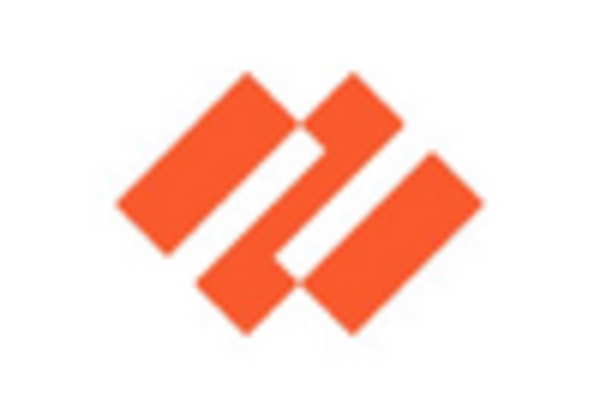-
EXECUTIVE SUMMARY
-
Market Overview
-
Key Findings
-
Market Segmentation
-
Competitive Landscape
-
Challenges and Opportunities
-
Future Outlook
-
\r\n
-
MARKET INTRODUCTION
-
Definition
-
Scope of the study
- Research Objective
- Assumption
- Limitations
-
RESEARCH METHODOLOGY
-
Overview
-
Data Mining
-
Secondary Research
-
Primary Research
- Primary Interviews and Information Gathering Process
- Breakdown of Primary Respondents
-
Forecasting Model
-
Market Size Estimation
- Bottom-Up Approach
- Top-Down Approach
-
Data Triangulation
-
Validation
-
\r\n
-
MARKET DYNAMICS
-
Overview
-
Drivers
-
Restraints
-
Opportunities
-
MARKET FACTOR ANALYSIS
-
Value chain Analysis
-
Porter's Five Forces Analysis
- Bargaining Power of Suppliers
- Bargaining Power of Buyers
- Threat of New Entrants
- Threat of Substitutes
- Intensity of Rivalry
-
COVID-19 Impact Analysis
- Market Impact Analysis
- Regional Impact
- Opportunity and Threat Analysis
-
\r\n
-
Zero Trust Security Market, BY Deployment Type (USD Billion)
-
Cloud-Based
-
On-Premises
-
Hybrid
-
Zero Trust Security Market, BY Component (USD Billion)
-
Solutions
-
Services
-
Software
-
Zero Trust Security Market, BY Application (USD Billion)
-
Identity Access Management
-
Network Security
-
Endpoint Security
-
Data Security
-
Zero Trust Security Market, BY End Use (USD Billion)
-
BFSI
-
IT and Telecommunications
-
Healthcare
-
Government
-
Retail
-
Zero Trust Security Market, BY Regional (USD Billion)
-
North America
- US
- Canada
-
Europe
- Germany
- UK
- France
- Russia
- Italy
- Spain
- Rest of Europe
-
APAC
- China
- India
- Japan
- South Korea
- Malaysia
- Thailand
- Indonesia
- Rest of APAC
-
South America
- Brazil
- Mexico
- Argentina
- Rest of South America
-
MEA
- GCC Countries
- South Africa
- Rest of MEA
-
\r\n
-
Competitive Landscape
-
Overview
-
Competitive Analysis
-
Market share Analysis
-
Major Growth Strategy in the Zero Trust Security Market
-
Competitive Benchmarking
-
Leading Players in Terms of Number of Developments in the Zero Trust Security Market
-
Key developments and growth strategies
- New Product Launch/Service Deployment
- Merger & Acquisitions
- Joint Ventures
-
Major Players Financial Matrix
- Sales and Operating Income
- Major Players R&D Expenditure. 2023
-
Company Profiles
-
Symantec
- Financial Overview
- Products Offered
- Key Developments
- SWOT Analysis
- Key Strategies
-
McAfee
- Financial Overview
- Products Offered
- Key Developments
- SWOT Analysis
- Key Strategies
-
Cloudflare
- Financial Overview
- Products Offered
- Key Developments
- SWOT Analysis
- Key Strategies
-
Microsoft
- Financial Overview
- Products Offered
- Key Developments
- SWOT Analysis
- Key Strategies
-
CrowdStrike
- Financial Overview
- Products Offered
- Key Developments
- SWOT Analysis
- Key Strategies
-
Palo Alto Networks
- Financial Overview
- Products Offered
- Key Developments
- SWOT Analysis
- Key Strategies
-
BeyondTrust
- Financial Overview
- Products Offered
- Key Developments
- SWOT Analysis
- Key Strategies
-
IBM
- Financial Overview
- Products Offered
- Key Developments
- SWOT Analysis
- Key Strategies
-
Zscaler
- Financial Overview
- Products Offered
- Key Developments
- SWOT Analysis
- Key Strategies
-
Forcepoint
- Financial Overview
- Products Offered
- Key Developments
- SWOT Analysis
- Key Strategies
-
Cisco
- Financial Overview
- Products Offered
- Key Developments
- SWOT Analysis
- Key Strategies
-
Tenable
- Financial Overview
- Products Offered
- Key Developments
- SWOT Analysis
- Key Strategies
-
SonicWall
- Financial Overview
- Products Offered
- Key Developments
- SWOT Analysis
- Key Strategies
-
VMware
- Financial Overview
- Products Offered
- Key Developments
- SWOT Analysis
- Key Strategies
-
Okta
- Financial Overview
- Products Offered
- Key Developments
- SWOT Analysis
- Key Strategies
-
Appendix
-
References
-
Related Reports
-
LIST Of tables
-
\r\n
-
LIST OF ASSUMPTIONS
-
North America Zero Trust Security Market SIZE ESTIMATES & FORECAST, BY DEPLOYMENT TYPE, 2019-2035 (USD Billions)
-
North America Zero Trust Security Market SIZE ESTIMATES & FORECAST, BY COMPONENT, 2019-2035 (USD Billions)
-
North America Zero Trust Security Market SIZE ESTIMATES & FORECAST, BY APPLICATION, 2019-2035 (USD Billions)
-
North America Zero Trust Security Market SIZE ESTIMATES & FORECAST, BY END USE, 2019-2035 (USD Billions)
-
North America Zero Trust Security Market SIZE ESTIMATES & FORECAST, BY REGIONAL, 2019-2035 (USD Billions)
-
US Zero Trust Security Market SIZE ESTIMATES & FORECAST, BY DEPLOYMENT TYPE, 2019-2035 (USD Billions)
-
US Zero Trust Security Market SIZE ESTIMATES & FORECAST, BY COMPONENT, 2019-2035 (USD Billions)
-
US Zero Trust Security Market SIZE ESTIMATES & FORECAST, BY APPLICATION, 2019-2035 (USD Billions)
-
US Zero Trust Security Market SIZE ESTIMATES & FORECAST, BY END USE, 2019-2035 (USD Billions)
-
US Zero Trust Security Market SIZE ESTIMATES & FORECAST, BY REGIONAL, 2019-2035 (USD Billions)
-
Canada Zero Trust Security Market SIZE ESTIMATES & FORECAST, BY DEPLOYMENT TYPE, 2019-2035 (USD Billions)
-
Canada Zero Trust Security Market SIZE ESTIMATES & FORECAST, BY COMPONENT, 2019-2035 (USD Billions)
-
Canada Zero Trust Security Market SIZE ESTIMATES & FORECAST, BY APPLICATION, 2019-2035 (USD Billions)
-
Canada Zero Trust Security Market SIZE ESTIMATES & FORECAST, BY END USE, 2019-2035 (USD Billions)
-
Canada Zero Trust Security Market SIZE ESTIMATES & FORECAST, BY REGIONAL, 2019-2035 (USD Billions)
-
Europe Zero Trust Security Market SIZE ESTIMATES & FORECAST, BY DEPLOYMENT TYPE, 2019-2035 (USD Billions)
-
Europe Zero Trust Security Market SIZE ESTIMATES & FORECAST, BY COMPONENT, 2019-2035 (USD Billions)
-
Europe Zero Trust Security Market SIZE ESTIMATES & FORECAST, BY APPLICATION, 2019-2035 (USD Billions)
-
Europe Zero Trust Security Market SIZE ESTIMATES & FORECAST, BY END USE, 2019-2035 (USD Billions)
-
Europe Zero Trust Security Market SIZE ESTIMATES & FORECAST, BY REGIONAL, 2019-2035 (USD Billions)
-
Germany Zero Trust Security Market SIZE ESTIMATES & FORECAST, BY DEPLOYMENT TYPE, 2019-2035 (USD Billions)
-
Germany Zero Trust Security Market SIZE ESTIMATES & FORECAST, BY COMPONENT, 2019-2035 (USD Billions)
-
Germany Zero Trust Security Market SIZE ESTIMATES & FORECAST, BY APPLICATION, 2019-2035 (USD Billions)
-
Germany Zero Trust Security Market SIZE ESTIMATES & FORECAST, BY END USE, 2019-2035 (USD Billions)
-
Germany Zero Trust Security Market SIZE ESTIMATES & FORECAST, BY REGIONAL, 2019-2035 (USD Billions)
-
UK Zero Trust Security Market SIZE ESTIMATES & FORECAST, BY DEPLOYMENT TYPE, 2019-2035 (USD Billions)
-
UK Zero Trust Security Market SIZE ESTIMATES & FORECAST, BY COMPONENT, 2019-2035 (USD Billions)
-
UK Zero Trust Security Market SIZE ESTIMATES & FORECAST, BY APPLICATION, 2019-2035 (USD Billions)
-
UK Zero Trust Security Market SIZE ESTIMATES & FORECAST, BY END USE, 2019-2035 (USD Billions)
-
UK Zero Trust Security Market SIZE ESTIMATES & FORECAST, BY REGIONAL, 2019-2035 (USD Billions)
-
France Zero Trust Security Market SIZE ESTIMATES & FORECAST, BY DEPLOYMENT TYPE, 2019-2035 (USD Billions)
-
France Zero Trust Security Market SIZE ESTIMATES & FORECAST, BY COMPONENT, 2019-2035 (USD Billions)
-
France Zero Trust Security Market SIZE ESTIMATES & FORECAST, BY APPLICATION, 2019-2035 (USD Billions)
-
France Zero Trust Security Market SIZE ESTIMATES & FORECAST, BY END USE, 2019-2035 (USD Billions)
-
France Zero Trust Security Market SIZE ESTIMATES & FORECAST, BY REGIONAL, 2019-2035 (USD Billions)
-
Russia Zero Trust Security Market SIZE ESTIMATES & FORECAST, BY DEPLOYMENT TYPE, 2019-2035 (USD Billions)
-
Russia Zero Trust Security Market SIZE ESTIMATES & FORECAST, BY COMPONENT, 2019-2035 (USD Billions)
-
Russia Zero Trust Security Market SIZE ESTIMATES & FORECAST, BY APPLICATION, 2019-2035 (USD Billions)
-
Russia Zero Trust Security Market SIZE ESTIMATES & FORECAST, BY END USE, 2019-2035 (USD Billions)
-
Russia Zero Trust Security Market SIZE ESTIMATES & FORECAST, BY REGIONAL, 2019-2035 (USD Billions)
-
Italy Zero Trust Security Market SIZE ESTIMATES & FORECAST, BY DEPLOYMENT TYPE, 2019-2035 (USD Billions)
-
Italy Zero Trust Security Market SIZE ESTIMATES & FORECAST, BY COMPONENT, 2019-2035 (USD Billions)
-
Italy Zero Trust Security Market SIZE ESTIMATES & FORECAST, BY APPLICATION, 2019-2035 (USD Billions)
-
Italy Zero Trust Security Market SIZE ESTIMATES & FORECAST, BY END USE, 2019-2035 (USD Billions)
-
Italy Zero Trust Security Market SIZE ESTIMATES & FORECAST, BY REGIONAL, 2019-2035 (USD Billions)
-
Spain Zero Trust Security Market SIZE ESTIMATES & FORECAST, BY DEPLOYMENT TYPE, 2019-2035 (USD Billions)
-
Spain Zero Trust Security Market SIZE ESTIMATES & FORECAST, BY COMPONENT, 2019-2035 (USD Billions)
-
Spain Zero Trust Security Market SIZE ESTIMATES & FORECAST, BY APPLICATION, 2019-2035 (USD Billions)
-
Spain Zero Trust Security Market SIZE ESTIMATES & FORECAST, BY END USE, 2019-2035 (USD Billions)
-
Spain Zero Trust Security Market SIZE ESTIMATES & FORECAST, BY REGIONAL, 2019-2035 (USD Billions)
-
Rest of Europe Zero Trust Security Market SIZE ESTIMATES & FORECAST, BY DEPLOYMENT TYPE, 2019-2035 (USD Billions)
-
Rest of Europe Zero Trust Security Market SIZE ESTIMATES & FORECAST, BY COMPONENT, 2019-2035 (USD Billions)
-
Rest of Europe Zero Trust Security Market SIZE ESTIMATES & FORECAST, BY APPLICATION, 2019-2035 (USD Billions)
-
Rest of Europe Zero Trust Security Market SIZE ESTIMATES & FORECAST, BY END USE, 2019-2035 (USD Billions)
-
Rest of Europe Zero Trust Security Market SIZE ESTIMATES & FORECAST, BY REGIONAL, 2019-2035 (USD Billions)
-
APAC Zero Trust Security Market SIZE ESTIMATES & FORECAST, BY DEPLOYMENT TYPE, 2019-2035 (USD Billions)
-
APAC Zero Trust Security Market SIZE ESTIMATES & FORECAST, BY COMPONENT, 2019-2035 (USD Billions)
-
APAC Zero Trust Security Market SIZE ESTIMATES & FORECAST, BY APPLICATION, 2019-2035 (USD Billions)
-
APAC Zero Trust Security Market SIZE ESTIMATES & FORECAST, BY END USE, 2019-2035 (USD Billions)
-
APAC Zero Trust Security Market SIZE ESTIMATES & FORECAST, BY REGIONAL, 2019-2035 (USD Billions)
-
China Zero Trust Security Market SIZE ESTIMATES & FORECAST, BY DEPLOYMENT TYPE, 2019-2035 (USD Billions)
-
China Zero Trust Security Market SIZE ESTIMATES & FORECAST, BY COMPONENT, 2019-2035 (USD Billions)
-
China Zero Trust Security Market SIZE ESTIMATES & FORECAST, BY APPLICATION, 2019-2035 (USD Billions)
-
China Zero Trust Security Market SIZE ESTIMATES & FORECAST, BY END USE, 2019-2035 (USD Billions)
-
China Zero Trust Security Market SIZE ESTIMATES & FORECAST, BY REGIONAL, 2019-2035 (USD Billions)
-
India Zero Trust Security Market SIZE ESTIMATES & FORECAST, BY DEPLOYMENT TYPE, 2019-2035 (USD Billions)
-
India Zero Trust Security Market SIZE ESTIMATES & FORECAST, BY COMPONENT, 2019-2035 (USD Billions)
-
India Zero Trust Security Market SIZE ESTIMATES & FORECAST, BY APPLICATION, 2019-2035 (USD Billions)
-
India Zero Trust Security Market SIZE ESTIMATES & FORECAST, BY END USE, 2019-2035 (USD Billions)
-
India Zero Trust Security Market SIZE ESTIMATES & FORECAST, BY REGIONAL, 2019-2035 (USD Billions)
-
Japan Zero Trust Security Market SIZE ESTIMATES & FORECAST, BY DEPLOYMENT TYPE, 2019-2035 (USD Billions)
-
Japan Zero Trust Security Market SIZE ESTIMATES & FORECAST, BY COMPONENT, 2019-2035 (USD Billions)
-
Japan Zero Trust Security Market SIZE ESTIMATES & FORECAST, BY APPLICATION, 2019-2035 (USD Billions)
-
Japan Zero Trust Security Market SIZE ESTIMATES & FORECAST, BY END USE, 2019-2035 (USD Billions)
-
Japan Zero Trust Security Market SIZE ESTIMATES & FORECAST, BY REGIONAL, 2019-2035 (USD Billions)
-
South Korea Zero Trust Security Market SIZE ESTIMATES & FORECAST, BY DEPLOYMENT TYPE, 2019-2035 (USD Billions)
-
South Korea Zero Trust Security Market SIZE ESTIMATES & FORECAST, BY COMPONENT, 2019-2035 (USD Billions)
-
South Korea Zero Trust Security Market SIZE ESTIMATES & FORECAST, BY APPLICATION, 2019-2035 (USD Billions)
-
South Korea Zero Trust Security Market SIZE ESTIMATES & FORECAST, BY END USE, 2019-2035 (USD Billions)
-
South Korea Zero Trust Security Market SIZE ESTIMATES & FORECAST, BY REGIONAL, 2019-2035 (USD Billions)
-
Malaysia Zero Trust Security Market SIZE ESTIMATES & FORECAST, BY DEPLOYMENT TYPE, 2019-2035 (USD Billions)
-
Malaysia Zero Trust Security Market SIZE ESTIMATES & FORECAST, BY COMPONENT, 2019-2035 (USD Billions)
-
Malaysia Zero Trust Security Market SIZE ESTIMATES & FORECAST, BY APPLICATION, 2019-2035 (USD Billions)
-
Malaysia Zero Trust Security Market SIZE ESTIMATES & FORECAST, BY END USE, 2019-2035 (USD Billions)
-
Malaysia Zero Trust Security Market SIZE ESTIMATES & FORECAST, BY REGIONAL, 2019-2035 (USD Billions)
-
Thailand Zero Trust Security Market SIZE ESTIMATES & FORECAST, BY DEPLOYMENT TYPE, 2019-2035 (USD Billions)
-
Thailand Zero Trust Security Market SIZE ESTIMATES & FORECAST, BY COMPONENT, 2019-2035 (USD Billions)
-
Thailand Zero Trust Security Market SIZE ESTIMATES & FORECAST, BY APPLICATION, 2019-2035 (USD Billions)
-
Thailand Zero Trust Security Market SIZE ESTIMATES & FORECAST, BY END USE, 2019-2035 (USD Billions)
-
Thailand Zero Trust Security Market SIZE ESTIMATES & FORECAST, BY REGIONAL, 2019-2035 (USD Billions)
-
Indonesia Zero Trust Security Market SIZE ESTIMATES & FORECAST, BY DEPLOYMENT TYPE, 2019-2035 (USD Billions)
-
Indonesia Zero Trust Security Market SIZE ESTIMATES & FORECAST, BY COMPONENT, 2019-2035 (USD Billions)
-
Indonesia Zero Trust Security Market SIZE ESTIMATES & FORECAST, BY APPLICATION, 2019-2035 (USD Billions)
-
Indonesia Zero Trust Security Market SIZE ESTIMATES & FORECAST, BY END USE, 2019-2035 (USD Billions)
-
Indonesia Zero Trust Security Market SIZE ESTIMATES & FORECAST, BY REGIONAL, 2019-2035 (USD Billions)
-
Rest of APAC Zero Trust Security Market SIZE ESTIMATES & FORECAST, BY DEPLOYMENT TYPE, 2019-2035 (USD Billions)
-
Rest of APAC Zero Trust Security Market SIZE ESTIMATES & FORECAST, BY COMPONENT, 2019-2035 (USD Billions)
-
Rest of APAC Zero Trust Security Market SIZE ESTIMATES & FORECAST, BY APPLICATION, 2019-2035 (USD Billions)
-
Rest of APAC Zero Trust Security Market SIZE ESTIMATES & FORECAST, BY END USE, 2019-2035 (USD Billions)
-
Rest of APAC Zero Trust Security Market SIZE ESTIMATES & FORECAST, BY REGIONAL, 2019-2035 (USD Billions)
-
South America Zero Trust Security Market SIZE ESTIMATES & FORECAST, BY DEPLOYMENT TYPE, 2019-2035 (USD Billions)
-
South America Zero Trust Security Market SIZE ESTIMATES & FORECAST, BY COMPONENT, 2019-2035 (USD Billions)
-
South America Zero Trust Security Market SIZE ESTIMATES & FORECAST, BY APPLICATION, 2019-2035 (USD Billions)
-
South America Zero Trust Security Market SIZE ESTIMATES & FORECAST, BY END USE, 2019-2035 (USD Billions)
-
South America Zero Trust Security Market SIZE ESTIMATES & FORECAST, BY REGIONAL, 2019-2035 (USD Billions)
-
Brazil Zero Trust Security Market SIZE ESTIMATES & FORECAST, BY DEPLOYMENT TYPE, 2019-2035 (USD Billions)
-
Brazil Zero Trust Security Market SIZE ESTIMATES & FORECAST, BY COMPONENT, 2019-2035 (USD Billions)
-
Brazil Zero Trust Security Market SIZE ESTIMATES & FORECAST, BY APPLICATION, 2019-2035 (USD Billions)
-
Brazil Zero Trust Security Market SIZE ESTIMATES & FORECAST, BY END USE, 2019-2035 (USD Billions)
-
Brazil Zero Trust Security Market SIZE ESTIMATES & FORECAST, BY REGIONAL, 2019-2035 (USD Billions)
-
Mexico Zero Trust Security Market SIZE ESTIMATES & FORECAST, BY DEPLOYMENT TYPE, 2019-2035 (USD Billions)
-
Mexico Zero Trust Security Market SIZE ESTIMATES & FORECAST, BY COMPONENT, 2019-2035 (USD Billions)
-
Mexico Zero Trust Security Market SIZE ESTIMATES & FORECAST, BY APPLICATION, 2019-2035 (USD Billions)
-
Mexico Zero Trust Security Market SIZE ESTIMATES & FORECAST, BY END USE, 2019-2035 (USD Billions)
-
Mexico Zero Trust Security Market SIZE ESTIMATES & FORECAST, BY REGIONAL, 2019-2035 (USD Billions)
-
Argentina Zero Trust Security Market SIZE ESTIMATES & FORECAST, BY DEPLOYMENT TYPE, 2019-2035 (USD Billions)
-
Argentina Zero Trust Security Market SIZE ESTIMATES & FORECAST, BY COMPONENT, 2019-2035 (USD Billions)
-
Argentina Zero Trust Security Market SIZE ESTIMATES & FORECAST, BY APPLICATION, 2019-2035 (USD Billions)
-
Argentina Zero Trust Security Market SIZE ESTIMATES & FORECAST, BY END USE, 2019-2035 (USD Billions)
-
Argentina Zero Trust Security Market SIZE ESTIMATES & FORECAST, BY REGIONAL, 2019-2035 (USD Billions)
-
Rest of South America Zero Trust Security Market SIZE ESTIMATES & FORECAST, BY DEPLOYMENT TYPE, 2019-2035 (USD Billions)
-
Rest of South America Zero Trust Security Market SIZE ESTIMATES & FORECAST, BY COMPONENT, 2019-2035 (USD Billions)
-
Rest of South America Zero Trust Security Market SIZE ESTIMATES & FORECAST, BY APPLICATION, 2019-2035 (USD Billions)
-
Rest of South America Zero Trust Security Market SIZE ESTIMATES & FORECAST, BY END USE, 2019-2035 (USD Billions)
-
Rest of South America Zero Trust Security Market SIZE ESTIMATES & FORECAST, BY REGIONAL, 2019-2035 (USD Billions)
-
MEA Zero Trust Security Market SIZE ESTIMATES & FORECAST, BY DEPLOYMENT TYPE, 2019-2035 (USD Billions)
-
MEA Zero Trust Security Market SIZE ESTIMATES & FORECAST, BY COMPONENT, 2019-2035 (USD Billions)
-
MEA Zero Trust Security Market SIZE ESTIMATES & FORECAST, BY APPLICATION, 2019-2035 (USD Billions)
-
MEA Zero Trust Security Market SIZE ESTIMATES & FORECAST, BY END USE, 2019-2035 (USD Billions)
-
MEA Zero Trust Security Market SIZE ESTIMATES & FORECAST, BY REGIONAL, 2019-2035 (USD Billions)
-
GCC Countries Zero Trust Security Market SIZE ESTIMATES & FORECAST, BY DEPLOYMENT TYPE, 2019-2035 (USD Billions)
-
GCC Countries Zero Trust Security Market SIZE ESTIMATES & FORECAST, BY COMPONENT, 2019-2035 (USD Billions)
-
GCC Countries Zero Trust Security Market SIZE ESTIMATES & FORECAST, BY APPLICATION, 2019-2035 (USD Billions)
-
GCC Countries Zero Trust Security Market SIZE ESTIMATES & FORECAST, BY END USE, 2019-2035 (USD Billions)
-
GCC Countries Zero Trust Security Market SIZE ESTIMATES & FORECAST, BY REGIONAL, 2019-2035 (USD Billions)
-
South Africa Zero Trust Security Market SIZE ESTIMATES & FORECAST, BY DEPLOYMENT TYPE, 2019-2035 (USD Billions)
-
South Africa Zero Trust Security Market SIZE ESTIMATES & FORECAST, BY COMPONENT, 2019-2035 (USD Billions)
-
South Africa Zero Trust Security Market SIZE ESTIMATES & FORECAST, BY APPLICATION, 2019-2035 (USD Billions)
-
South Africa Zero Trust Security Market SIZE ESTIMATES & FORECAST, BY END USE, 2019-2035 (USD Billions)
-
South Africa Zero Trust Security Market SIZE ESTIMATES & FORECAST, BY REGIONAL, 2019-2035 (USD Billions)
-
Rest of MEA Zero Trust Security Market SIZE ESTIMATES & FORECAST, BY DEPLOYMENT TYPE, 2019-2035 (USD Billions)
-
Rest of MEA Zero Trust Security Market SIZE ESTIMATES & FORECAST, BY COMPONENT, 2019-2035 (USD Billions)
-
Rest of MEA Zero Trust Security Market SIZE ESTIMATES & FORECAST, BY APPLICATION, 2019-2035 (USD Billions)
-
Rest of MEA Zero Trust Security Market SIZE ESTIMATES & FORECAST, BY END USE, 2019-2035 (USD Billions)
-
Rest of MEA Zero Trust Security Market SIZE ESTIMATES & FORECAST, BY REGIONAL, 2019-2035 (USD Billions)
-
PRODUCT LAUNCH/PRODUCT DEVELOPMENT/APPROVAL
-
ACQUISITION/PARTNERSHIP
-
\r\n
-
\r\n
-
\r\n
-
\r\n
-
\r\n
-
\r\n
-
\r\n
-
\r\n
-
\r\n
-
\r\n
-
\r\n
-
\r\n
-
\r\n
-
\r\n
-
\r\n
-
LIST Of figures
-
\r\n
-
MARKET SYNOPSIS
-
NORTH AMERICA ZERO TRUST SECURITY MARKET ANALYSIS
-
US ZERO TRUST SECURITY MARKET ANALYSIS BY DEPLOYMENT TYPE
-
US ZERO TRUST SECURITY MARKET ANALYSIS BY COMPONENT
-
US ZERO TRUST SECURITY MARKET ANALYSIS BY APPLICATION
-
US ZERO TRUST SECURITY MARKET ANALYSIS BY END USE
-
US ZERO TRUST SECURITY MARKET ANALYSIS BY REGIONAL
-
CANADA ZERO TRUST SECURITY MARKET ANALYSIS BY DEPLOYMENT TYPE
-
CANADA ZERO TRUST SECURITY MARKET ANALYSIS BY COMPONENT
-
CANADA ZERO TRUST SECURITY MARKET ANALYSIS BY APPLICATION
-
CANADA ZERO TRUST SECURITY MARKET ANALYSIS BY END USE
-
CANADA ZERO TRUST SECURITY MARKET ANALYSIS BY REGIONAL
-
EUROPE ZERO TRUST SECURITY MARKET ANALYSIS
-
GERMANY ZERO TRUST SECURITY MARKET ANALYSIS BY DEPLOYMENT TYPE
-
GERMANY ZERO TRUST SECURITY MARKET ANALYSIS BY COMPONENT
-
GERMANY ZERO TRUST SECURITY MARKET ANALYSIS BY APPLICATION
-
GERMANY ZERO TRUST SECURITY MARKET ANALYSIS BY END USE
-
GERMANY ZERO TRUST SECURITY MARKET ANALYSIS BY REGIONAL
-
UK ZERO TRUST SECURITY MARKET ANALYSIS BY DEPLOYMENT TYPE
-
UK ZERO TRUST SECURITY MARKET ANALYSIS BY COMPONENT
-
UK ZERO TRUST SECURITY MARKET ANALYSIS BY APPLICATION
-
UK ZERO TRUST SECURITY MARKET ANALYSIS BY END USE
-
UK ZERO TRUST SECURITY MARKET ANALYSIS BY REGIONAL
-
FRANCE ZERO TRUST SECURITY MARKET ANALYSIS BY DEPLOYMENT TYPE
-
FRANCE ZERO TRUST SECURITY MARKET ANALYSIS BY COMPONENT
-
FRANCE ZERO TRUST SECURITY MARKET ANALYSIS BY APPLICATION
-
FRANCE ZERO TRUST SECURITY MARKET ANALYSIS BY END USE
-
FRANCE ZERO TRUST SECURITY MARKET ANALYSIS BY REGIONAL
-
RUSSIA ZERO TRUST SECURITY MARKET ANALYSIS BY DEPLOYMENT TYPE
-
RUSSIA ZERO TRUST SECURITY MARKET ANALYSIS BY COMPONENT
-
RUSSIA ZERO TRUST SECURITY MARKET ANALYSIS BY APPLICATION
-
RUSSIA ZERO TRUST SECURITY MARKET ANALYSIS BY END USE
-
RUSSIA ZERO TRUST SECURITY MARKET ANALYSIS BY REGIONAL
-
ITALY ZERO TRUST SECURITY MARKET ANALYSIS BY DEPLOYMENT TYPE
-
ITALY ZERO TRUST SECURITY MARKET ANALYSIS BY COMPONENT
-
ITALY ZERO TRUST SECURITY MARKET ANALYSIS BY APPLICATION
-
ITALY ZERO TRUST SECURITY MARKET ANALYSIS BY END USE
-
ITALY ZERO TRUST SECURITY MARKET ANALYSIS BY REGIONAL
-
SPAIN ZERO TRUST SECURITY MARKET ANALYSIS BY DEPLOYMENT TYPE
-
SPAIN ZERO TRUST SECURITY MARKET ANALYSIS BY COMPONENT
-
SPAIN ZERO TRUST SECURITY MARKET ANALYSIS BY APPLICATION
-
SPAIN ZERO TRUST SECURITY MARKET ANALYSIS BY END USE
-
SPAIN ZERO TRUST SECURITY MARKET ANALYSIS BY REGIONAL
-
REST OF EUROPE ZERO TRUST SECURITY MARKET ANALYSIS BY DEPLOYMENT TYPE
-
REST OF EUROPE ZERO TRUST SECURITY MARKET ANALYSIS BY COMPONENT
-
REST OF EUROPE ZERO TRUST SECURITY MARKET ANALYSIS BY APPLICATION
-
REST OF EUROPE ZERO TRUST SECURITY MARKET ANALYSIS BY END USE
-
REST OF EUROPE ZERO TRUST SECURITY MARKET ANALYSIS BY REGIONAL
-
APAC ZERO TRUST SECURITY MARKET ANALYSIS
-
CHINA ZERO TRUST SECURITY MARKET ANALYSIS BY DEPLOYMENT TYPE
-
CHINA ZERO TRUST SECURITY MARKET ANALYSIS BY COMPONENT
-
CHINA ZERO TRUST SECURITY MARKET ANALYSIS BY APPLICATION
-
CHINA ZERO TRUST SECURITY MARKET ANALYSIS BY END USE
-
CHINA ZERO TRUST SECURITY MARKET ANALYSIS BY REGIONAL
-
INDIA ZERO TRUST SECURITY MARKET ANALYSIS BY DEPLOYMENT TYPE
-
INDIA ZERO TRUST SECURITY MARKET ANALYSIS BY COMPONENT
-
INDIA ZERO TRUST SECURITY MARKET ANALYSIS BY APPLICATION
-
INDIA ZERO TRUST SECURITY MARKET ANALYSIS BY END USE
-
INDIA ZERO TRUST SECURITY MARKET ANALYSIS BY REGIONAL
-
JAPAN ZERO TRUST SECURITY MARKET ANALYSIS BY DEPLOYMENT TYPE
-
JAPAN ZERO TRUST SECURITY MARKET ANALYSIS BY COMPONENT
-
JAPAN ZERO TRUST SECURITY MARKET ANALYSIS BY APPLICATION
-
JAPAN ZERO TRUST SECURITY MARKET ANALYSIS BY END USE
-
JAPAN ZERO TRUST SECURITY MARKET ANALYSIS BY REGIONAL
-
SOUTH KOREA ZERO TRUST SECURITY MARKET ANALYSIS BY DEPLOYMENT TYPE
-
SOUTH KOREA ZERO TRUST SECURITY MARKET ANALYSIS BY COMPONENT
-
SOUTH KOREA ZERO TRUST SECURITY MARKET ANALYSIS BY APPLICATION
-
SOUTH KOREA ZERO TRUST SECURITY MARKET ANALYSIS BY END USE
-
SOUTH KOREA ZERO TRUST SECURITY MARKET ANALYSIS BY REGIONAL
-
MALAYSIA ZERO TRUST SECURITY MARKET ANALYSIS BY DEPLOYMENT TYPE
-
MALAYSIA ZERO TRUST SECURITY MARKET ANALYSIS BY COMPONENT
-
MALAYSIA ZERO TRUST SECURITY MARKET ANALYSIS BY APPLICATION
-
MALAYSIA ZERO TRUST SECURITY MARKET ANALYSIS BY END USE
-
MALAYSIA ZERO TRUST SECURITY MARKET ANALYSIS BY REGIONAL
-
THAILAND ZERO TRUST SECURITY MARKET ANALYSIS BY DEPLOYMENT TYPE
-
THAILAND ZERO TRUST SECURITY MARKET ANALYSIS BY COMPONENT
-
THAILAND ZERO TRUST SECURITY MARKET ANALYSIS BY APPLICATION
-
THAILAND ZERO TRUST SECURITY MARKET ANALYSIS BY END USE
-
THAILAND ZERO TRUST SECURITY MARKET ANALYSIS BY REGIONAL
-
INDONESIA ZERO TRUST SECURITY MARKET ANALYSIS BY DEPLOYMENT TYPE
-
INDONESIA ZERO TRUST SECURITY MARKET ANALYSIS BY COMPONENT
-
INDONESIA ZERO TRUST SECURITY MARKET ANALYSIS BY APPLICATION
-
INDONESIA ZERO TRUST SECURITY MARKET ANALYSIS BY END USE
-
INDONESIA ZERO TRUST SECURITY MARKET ANALYSIS BY REGIONAL
-
REST OF APAC ZERO TRUST SECURITY MARKET ANALYSIS BY DEPLOYMENT TYPE
-
REST OF APAC ZERO TRUST SECURITY MARKET ANALYSIS BY COMPONENT
-
REST OF APAC ZERO TRUST SECURITY MARKET ANALYSIS BY APPLICATION
-
REST OF APAC ZERO TRUST SECURITY MARKET ANALYSIS BY END USE
-
REST OF APAC ZERO TRUST SECURITY MARKET ANALYSIS BY REGIONAL
-
SOUTH AMERICA ZERO TRUST SECURITY MARKET ANALYSIS
-
BRAZIL ZERO TRUST SECURITY MARKET ANALYSIS BY DEPLOYMENT TYPE
-
BRAZIL ZERO TRUST SECURITY MARKET ANALYSIS BY COMPONENT
-
BRAZIL ZERO TRUST SECURITY MARKET ANALYSIS BY APPLICATION
-
BRAZIL ZERO TRUST SECURITY MARKET ANALYSIS BY END USE
-
BRAZIL ZERO TRUST SECURITY MARKET ANALYSIS BY REGIONAL
-
MEXICO ZERO TRUST SECURITY MARKET ANALYSIS BY DEPLOYMENT TYPE
-
MEXICO ZERO TRUST SECURITY MARKET ANALYSIS BY COMPONENT
-
MEXICO ZERO TRUST SECURITY MARKET ANALYSIS BY APPLICATION
-
MEXICO ZERO TRUST SECURITY MARKET ANALYSIS BY END USE
-
MEXICO ZERO TRUST SECURITY MARKET ANALYSIS BY REGIONAL
-
ARGENTINA ZERO TRUST SECURITY MARKET ANALYSIS BY DEPLOYMENT TYPE
-
ARGENTINA ZERO TRUST SECURITY MARKET ANALYSIS BY COMPONENT
-
ARGENTINA ZERO TRUST SECURITY MARKET ANALYSIS BY APPLICATION
-
ARGENTINA ZERO TRUST SECURITY MARKET ANALYSIS BY END USE
-
ARGENTINA ZERO TRUST SECURITY MARKET ANALYSIS BY REGIONAL
-
REST OF SOUTH AMERICA ZERO TRUST SECURITY MARKET ANALYSIS BY DEPLOYMENT TYPE
-
REST OF SOUTH AMERICA ZERO TRUST SECURITY MARKET ANALYSIS BY COMPONENT
-
REST OF SOUTH AMERICA ZERO TRUST SECURITY MARKET ANALYSIS BY APPLICATION
-
REST OF SOUTH AMERICA ZERO TRUST SECURITY MARKET ANALYSIS BY END USE
-
REST OF SOUTH AMERICA ZERO TRUST SECURITY MARKET ANALYSIS BY REGIONAL
-
MEA ZERO TRUST SECURITY MARKET ANALYSIS
-
GCC COUNTRIES ZERO TRUST SECURITY MARKET ANALYSIS BY DEPLOYMENT TYPE
-
GCC COUNTRIES ZERO TRUST SECURITY MARKET ANALYSIS BY COMPONENT
-
GCC COUNTRIES ZERO TRUST SECURITY MARKET ANALYSIS BY APPLICATION
-
GCC COUNTRIES ZERO TRUST SECURITY MARKET ANALYSIS BY END USE
-
GCC COUNTRIES ZERO TRUST SECURITY MARKET ANALYSIS BY REGIONAL
-
SOUTH AFRICA ZERO TRUST SECURITY MARKET ANALYSIS BY DEPLOYMENT TYPE
-
SOUTH AFRICA ZERO TRUST SECURITY MARKET ANALYSIS BY COMPONENT
-
SOUTH AFRICA ZERO TRUST SECURITY MARKET ANALYSIS BY APPLICATION
-
SOUTH AFRICA ZERO TRUST SECURITY MARKET ANALYSIS BY END USE
-
SOUTH AFRICA ZERO TRUST SECURITY MARKET ANALYSIS BY REGIONAL
-
REST OF MEA ZERO TRUST SECURITY MARKET ANALYSIS BY DEPLOYMENT TYPE
-
REST OF MEA ZERO TRUST SECURITY MARKET ANALYSIS BY COMPONENT
-
REST OF MEA ZERO TRUST SECURITY MARKET ANALYSIS BY APPLICATION
-
REST OF MEA ZERO TRUST SECURITY MARKET ANALYSIS BY END USE
-
REST OF MEA ZERO TRUST SECURITY MARKET ANALYSIS BY REGIONAL
-
KEY BUYING CRITERIA OF ZERO TRUST SECURITY MARKET
-
RESEARCH PROCESS OF MRFR
-
DRO ANALYSIS OF ZERO TRUST SECURITY MARKET
-
DRIVERS IMPACT ANALYSIS: ZERO TRUST SECURITY MARKET
-
RESTRAINTS IMPACT ANALYSIS: ZERO TRUST SECURITY MARKET
-
SUPPLY / VALUE CHAIN: ZERO TRUST SECURITY MARKET
-
ZERO TRUST SECURITY MARKET, BY DEPLOYMENT TYPE, 2025 (% SHARE)
-
ZERO TRUST SECURITY MARKET, BY DEPLOYMENT TYPE, 2019 TO 2035 (USD Billions)
-
ZERO TRUST SECURITY MARKET, BY COMPONENT, 2025 (% SHARE)
-
ZERO TRUST SECURITY MARKET, BY COMPONENT, 2019 TO 2035 (USD Billions)
-
ZERO TRUST SECURITY MARKET, BY APPLICATION, 2025 (% SHARE)
-
ZERO TRUST SECURITY MARKET, BY APPLICATION, 2019 TO 2035 (USD Billions)
-
ZERO TRUST SECURITY MARKET, BY END USE, 2025 (% SHARE)
-
ZERO TRUST SECURITY MARKET, BY END USE, 2019 TO 2035 (USD Billions)
-
ZERO TRUST SECURITY MARKET, BY REGIONAL, 2025 (% SHARE)
-
ZERO TRUST SECURITY MARKET, BY REGIONAL, 2019 TO 2035 (USD Billions)
-
BENCHMARKING OF MAJOR COMPETITORS










Leave a Comment